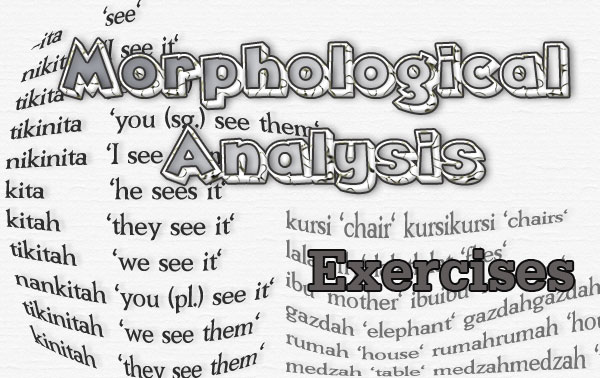In these research project exercises, you will deal with search hypothesis, search questions, MLA style reference, study variables, search objectives and search instruments.
Exercise 1
1. Choose one of the following research topics and answer the questions
• Factors behind shopping addiction.
• The importance of motivation for students.
a. State the objective of the study
b. Formulate the research hypothesis you will base your study on
c. State the research questions you will address
d. Write an outline for the topic you have chosen
• The importance of motivation for students.
a. State the objective of the study
b. Formulate the research hypothesis you will base your study on
c. State the research questions you will address
d. Write an outline for the topic you have chosen
2. Using the information below, write the references following the instructions:
- Name of the author: Jean Baker.
- Name of the article: Teacher-Student Interaction in Urban At-Risk Classrooms: Differential Behaviour, Relationship Quality, and Student Satisfaction with School.
- Year of publication: 1999
- Journal: The Elementary School Journal
- Volume number: 100 - Issue number: 1
- Pages: 57-70 - The article was Uploaded from this link:
http://owl.english.purdue.edu/owl/resource/560/01/
- Date: Use today’s date
Write the reference using the APA style
- Name of the author: Judith Butler
- Title of the book: Gender Trouble
- Publisher: Routledge
- Year of publication: 1999
- Place of publication: New York
Write the reference using the MLA style
- Name of the article: Teacher-Student Interaction in Urban At-Risk Classrooms: Differential Behaviour, Relationship Quality, and Student Satisfaction with School.
- Year of publication: 1999
- Journal: The Elementary School Journal
- Volume number: 100 - Issue number: 1
- Pages: 57-70 - The article was Uploaded from this link:
http://owl.english.purdue.edu/owl/resource/560/01/
- Date: Use today’s date
Write the reference using the APA style
- Name of the author: Judith Butler
- Title of the book: Gender Trouble
- Publisher: Routledge
- Year of publication: 1999
- Place of publication: New York
Write the reference using the MLA style
Exercise 2
I. Read carefully the following abstracts and extract the required information detailed in the questions below:
Study A: (De)Motivation in Preparatory EFL Classrooms
Vefali, Gülsen Musayeva; Ayan, Hatice Ç.
Applied Language Learning, v25 p16-40 2015
https://eric.ed.gov/?id=EJ1053486
This survey study aimed to explore EFL learners' (de)motivation in the preparatory classes at a tertiary institution in Northern Cyprus. It administered questionnaires to 105 preparatory learners and 30 language teachers. The statistical analysis revealed the Cronbach's alpha reliability coefficient of 0.88 for the Learners' version, and 0.89 for the Teachers' version of the questionnaire. The analysis of the language learners' self-reports showed an overall adequate level of their motivation, whereas the teachers' perceptions were less positive. Importantly, the findings of the present survey indicated congruence between the participants' positive survey reports in terms of the Teacher factor. However, the learners' self-reports on low motivational level in terms of self-confidence, and the teachers' perceptions of their learners' lack of motivation in terms of the attitude of group members, attitude to English, the language course, as well as self-confidence warranted attention. These results are discussed in relation to the pertinent literature, and pedagogical implications are suggested for the language institution in the context of the survey.
Study B: The Correlation among EFL Learners' Test Anxiety, Foreign Language Anxiety and Language Achievement
Cakici, Dilek
English Language Teaching, v9 n8 p190-203 2016
https://eric.ed.gov/?id=EJ1106656
The main aim of this study was to investigate the correlation among test anxiety (TA), foreign language anxiety (FLA) and language achievement of university preparatory students learning English as a foreign language. The sample of the research consisted of 301 (211 females, 90 males) attending a one-year EFL preparatory school at Ondokuz Mayis University, School of Foreign Languages. The TAI (Test Anxiety Inventory) developed by Spielberger (1980), FLCAS (Foreign Language Classroom Anxiety Scale) developed by Horwitz (1986) and the students' language achievement scores were used to collect data. In addition, this study aimed to determine the effect of gender on both TA and FLA. The findings of the study revealed that there was no relation between students' TA and their language achievement. It was also found a significant positive correlation between students' TA and FLA. Besides, the result demonstrated that there was a significant reverse correlation between students' FLA and their language achievement. Following t-test results, it was found out that females exhibited higher mean scores than males in both TAI and FLCAS. Finally, certain suggestions were set for EFL teachers to reduce text anxiety and language learning anxiety in foreign language classroom settings.
| Study A | Study B | |
1. What is the targeted population?
|
...
|
...
|
2. Describe the sample
|
...
|
...
|
3. What research design has been used?
|
...
|
...
|
4. What are the research instruments used?
|
...
|
...
|
5. What are the key variables in the study?
|
...
|
...
|
6. What is the dependent variable(s)?
|
...
|
...
|
7. What is the independent variable(s)?
|
...
|
...
|
8. What are the research objectives of the study?
|
...
|
...
|
9. What would be some relevant questions for the study (formulate them in your words)?
|
...
|
...
|
10. What would be a possible hypothesis for each of the studies (formulate in your own words)?
|
...
|
...
|









0 Comments